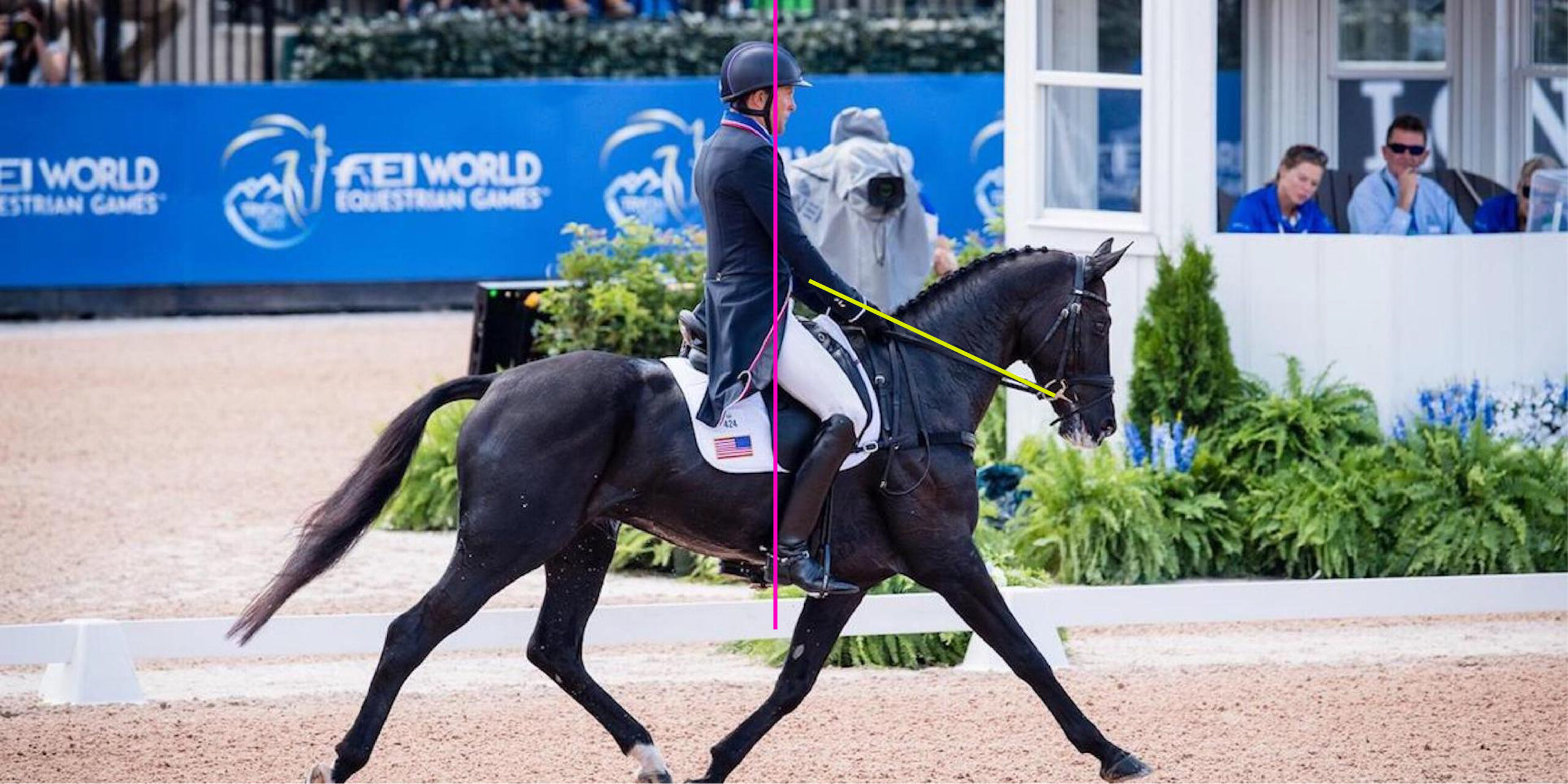Waivers and Lesson Student Package
Gift Cards
Two Straight Lines: Equitation Basics
I start most of my introductory lessons with the same sentence, whether you’re brand new to the sport or have been riding for years; “In good riding, there are two important straight lines.”

Boyd Martin on Tsetserleg with a great example of the sacred riding geometry during a dressage test. Original photo from Horses Daily.
A rider in a balanced position should be able to have an invisible line drawn down their body from their head, to shoulder, to hip, and to the back of the heel (pink line). Similarly, in a rider with good, balanced connection, the second line can be drawn from the rider’s elbow down the forearm and rein to the bit (yellow line). The mastery of these two basic lines is a foundation for solid and safe riding.
Riding properly allows your horse to move and perform better and for a longer period of time. A horse that has to carry an unbalanced rider has to work harder than one whose rider is maintaining good balance and equitation.
Things to look out for….
Riders have to become masters of self-discipline. When we are unable to ride with our trainers we have to think like them; remember the following to police your own equitation;
Where are your hands?
When your hands are too high, you’re breaking the straight line from elbow to bit. If we remember that our horse responds to pressure of any kind, we can see how this change in angle can cause our horse to respond. Habitually high hands ultimately put pressure on the bit, and consequently your horse’s mouth, that you may not be meaning to communicate. The opposite is also true; hands held too low will break the straight line and present the horse and rider with miscommunication issues, impacting the pair’s overall balance.
Are your reins too long?
Reins that are too long create a large loop and droop low on their way from the elbow to the bit. With loopy reins, it will take too long to effectively communicate to your horse when you need to, and you’ll find that you may no longer be in control of direction or pace. You will make larger motions with your body to cue for turns or halts, throwing yourself and your horse off balance. Reins that are too short just make your horse angry (0/10, would not recommend). Think like goldie locks on this one, you’re looking for that “just-right” middle – a nice firm-yet-relaxed straight line. This takes a while to master, don’t get discouraged! Play with your rein contact at home in this unmounted exercise.
Where is your lower leg?
Keeping your leg beneath your seat, with your heel turned to the ground and toe turned to the sky keeps you secure in the saddle. Envision you are forcing all of your body weight past your seat bones, down your legs, and out the bottoms of your heels – as if the ground were pulling them down like a magnet to metal. Stretching really helps develop the ability to drop your heels, try these exercises! Careful not to brace too hard against your stirrup iron in your effort to turn down your heels – it will push your lower leg forward. If you can glance down and see your toe in front of your knee, you’re pushing your foot too far forward, and leaving the rest of your body behind the horse’s motion. If you have a tendency to stand on the ball of your foot/toes in the stirrup iron and let your heels float upward, your legs are most likely drifting too far up the horse’s barrel and behind you, which will in turn bring your upper body forward over the horse’s shoulder. You’re so heavy when you do this to your horse (and it will cost you in jump rails!).
Where are your shoulders, chest and core?
Linked closely to the position of the rider’s lower leg, the upper body will pretty much do the opposite of your leg. Leg too far forward? Upper body is backward, dragging in the wind giving you that whiplash feeling. Leg too far back? Upper body leans forward over the shoulder and you’re suddenly closely studying the composition of the riding arena sand. Leg long and underneath of your seat? Happy instructor, happy horse, secure and confident rider.
—
jw